Photo Special: Jarmok- A Traditional Slovakian Festival

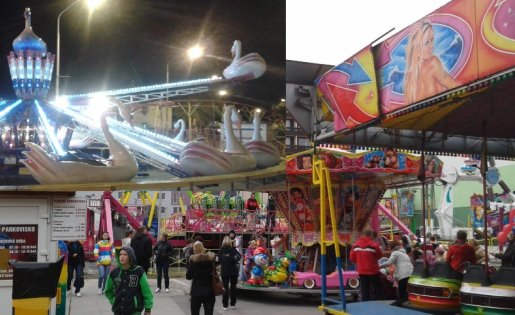
Jarmok is a kind of festival mixed with amusement park attractions. Unlike Oktoberfest or other famous festivals, jarmok does not focus exclusively on beer promotion. In fact, nowadays jarmok does not have any special purpose, but there are strong traditions rooted in the past.
The people would gather from time to time to exchange, and later unfortunately trade, their goods and enjoy themselves whilst doing it. Such market meetings took part in the early Autumn, after the end of the harvest season when the farmers looked to sell their crops and buy what they would need for the winter. The farmers and craftsmen were gradually replaced by supermarket suppliers and businessmen, but the idea of jarmok, or city market, remained.
Jarmoks take place over the whole year in different cities and towns, often connected by some kind of holiday- for example the city's anniversary or a Christian holiday. The jarmok in Levice (where I went) used to take place on St Martins day (11 November), but was brought forward to the middle of October for the better weather. My grandparents remember the traditional jarmoks, when the people used to sell real animals. Now, the poor horses serve as an attraction for the kids who consider them unicorns with broken horns.
I went to this year's jarmok in Levice and thought I'd share a few of the highlights.
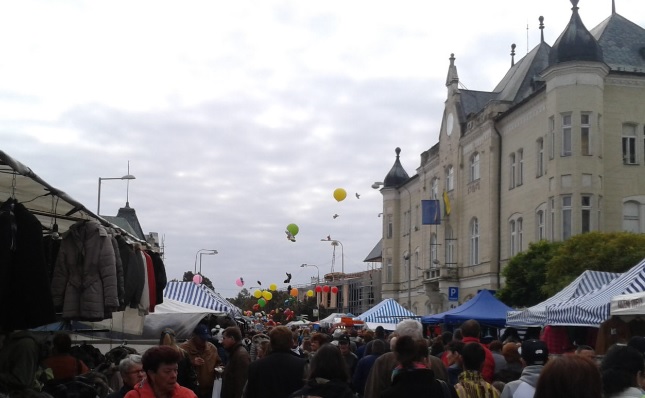
This is the crowd filling the town's streets on jarmok morning- the Levice jarmok is one of the biggest in Slovakia. The building on the right is the Townhouse in Levice.
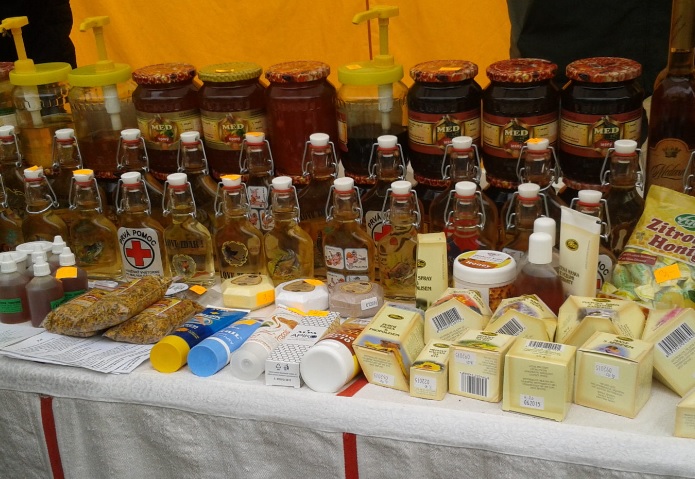
Jarmok offers many food stalls with different meals. There is usually grilled meat and sausages, potato pancakes, grilled chickens or whole pigs. Honey products are also very popular and sought after at jarmoks, especially honeywine (medovina). It is an alcoholic drink made from honey served hot.
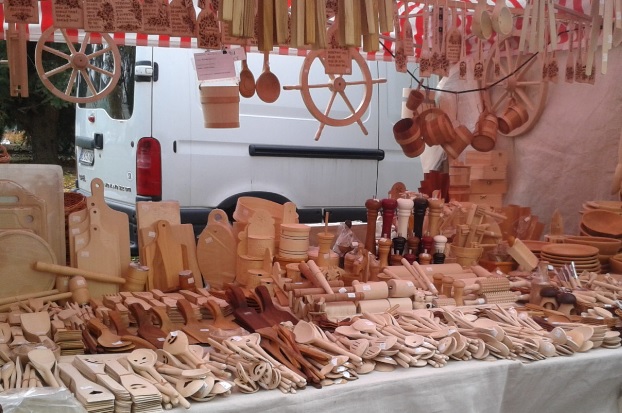
Original Slovak leather products such as belts and purses are sold, and often the quality is comparable to the most renowned brands. Alongside them, wooden dishes may not be a sign of wealth, but they're much more natural than being born with a plastic or silver spoon in your mouth.
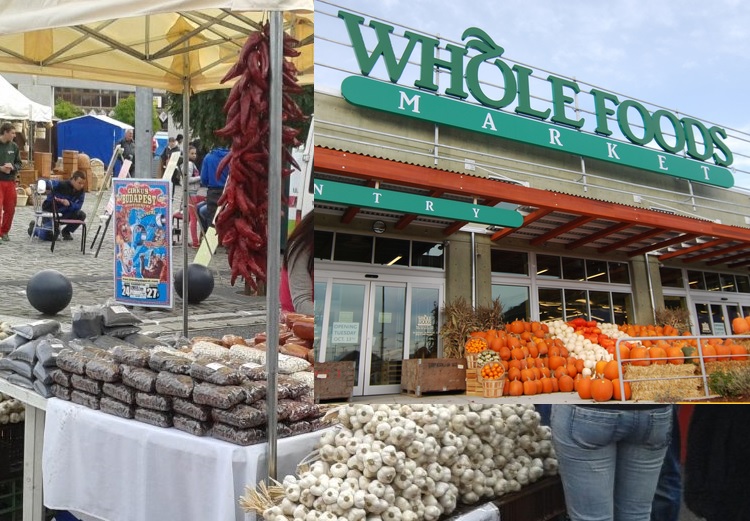
Some people still sell the traditional, home grown food and spices like the garlic and chilli peppers above - 100% whole foods. It is even more natural than the whole Whole Foods Market. There was also a whole collection of ginger breads- the perfect gift. A sweetheart for your sweetheart, for friends you can get other shapes.
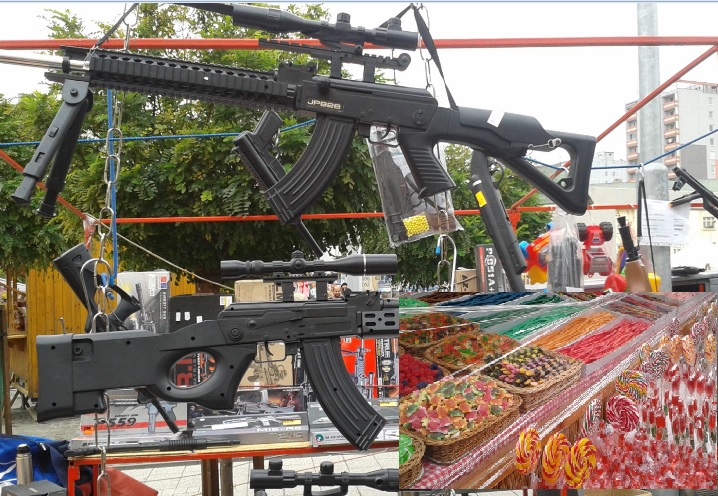
There are so many different things on sale, from fur clothing for the cold winters, to burciak- a young wine drunk days before full maturation, to... guns. Well, not the best place to teach peace in the world and a healthy lifestyle.
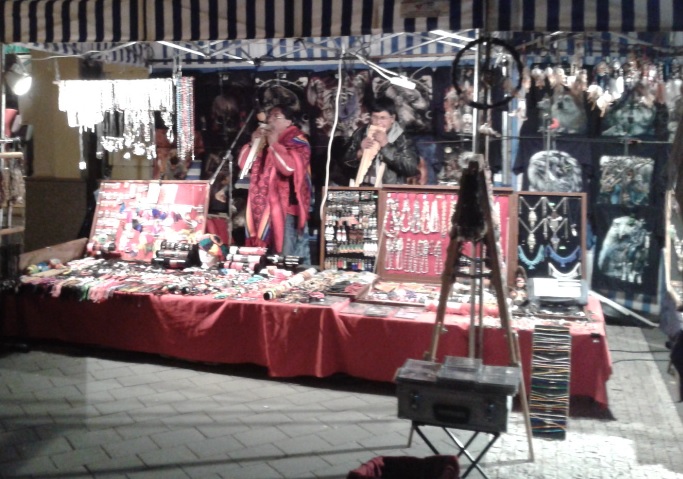
A really common part of every jarmok, are the traditional native South American performers singing their songs, but also covers of pop hits. They usually come from Bolivia or Colombia, travelling around the whole of Europe. Their accessories are made in South America, but I still think it would be more authentic to buy them on the slopes of the Andes.

There was a new attraction, I'd never seen before- hanging on a bar for the longest amount of time. The rules are simple: you pay the bookie €5 and if you manage to hang on the bar for 1min50secs, you win €50.
You could win, but the stall holder sets the time high above the competence of a fit man, let alone of the ordinary population. Guys were falling down like Newton's apples with cramps in their forearms. I managed 1min15secs.
Afterwards, I found a complete list of world records in pull ups, but nothing about hanging on a bar. Recently, I found out that I have performed about 35,000 pull ups in my training history. But I have never thought of making money out of this simple exercise. I took home two things: 1) I exercise for health, not money 2) the promoter knew that man's pride would cash him in €5. Still, I suppose it is better than spending the money on alcohol.
Erik Redli is a university graduate from Slovakia who lived in London for much of his graduate life. Read more of his posts here.








